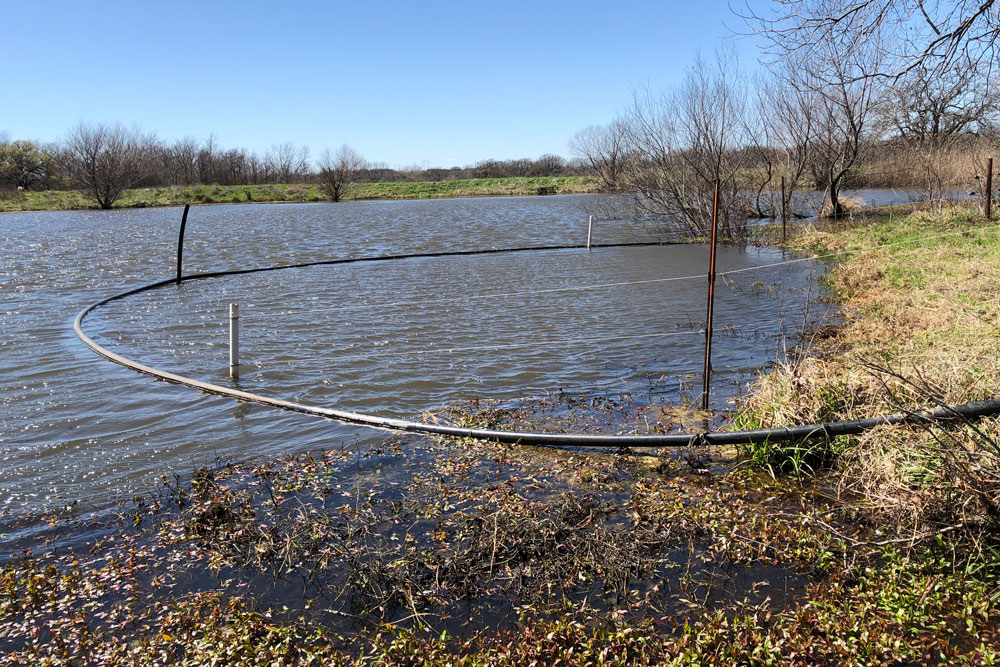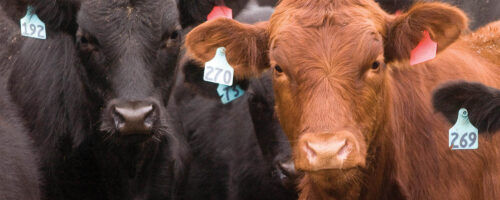Pond Fencing
Pond fencing helps reduce erosion and improve water quality where livestock create bare banks and trails along a pond.
Pond fencing helps reduce erosion and improve water quality where livestock create bare banks and trails along a pond.
A pond fence should protect all of a dam, the initial portion of a spillway, a portion of the incoming waterway(s), and most if not all of the shoreline. The fence can be constructed of many different materials, but electric fencing is probably the least expensive and least obtrusive option. A pond fence should be placed far enough from a pond (at least 12 feet) to allow enough room for a vehicle to drive around a pond inside the pond fence. This allows room to work on a pond, room to fish a pond, accumulation of plant material to help filter pollutants, and space for additional plant and animal diversity amidst a grazed pasture.
From a plant community and brush management perspective, it is often desirable to intentionally flash graze livestock inside a pond fence, leaving plenty of grass residue and soil cover after grazing, and allowing full grass recovery before grazing the site again.
Where livestock water is a function of a pond, one or two livestock water access points can be constructed as part of a pond fence. The illustration with this article shows one type of livestock water access point in a fenced pond. Water level fluctuates in most ponds; so, a floating fence is often the most practical way to contain livestock at a watering point. Floating fences have been used at our Pasture Demonstration Facility since 1990 when R.L. Dalrymple, Robert Carpenter, and Doug Grounds installed the first ones.
Livestock water access point considerations:
- The floating portion of the fence should be constructed of nonrustable material such as polyethylene pipe.
- The floating portion of the fence should be completely sealed and airtight.
- The floating fence should be 20-50 feet wide in most situations.
- Twenty feet of width works fine for small herds of cattle.
- Forty feet is used successfully with larger herds up to 200 cattle and probably more.
- Fifty feet is used successfully by a rancher with about 600 cattle in a herd.
- Ideally, the pond bottom at an access location should have a slope of about 30% from full level down to at least 6 feet of water. A site can be excavated to obtain adequate slope and depth when a pond does not have a good site.
- A floating fence should extend over a pond far enough to always contain water, even during a drought. In a typical southern Oklahoma pond, a floating fence should enclose some water with a depth of at least 6 feet. Less depth is adequate in a pond where water level does not fluctuate while more depth is required in a pond that seeps or has a small watershed.
- A layer of 6- to 12-inch rock should be laid on the pond bottom and covered with gravel to provide a firm base and better water quality in the livestock access area.
- A short diversion terrace near the entrance of a water access is sometimes necessary to prevent gully formation when the approach is steeply sloped.

Additional information about pond fencing is also available in the following diagrams:


Comment